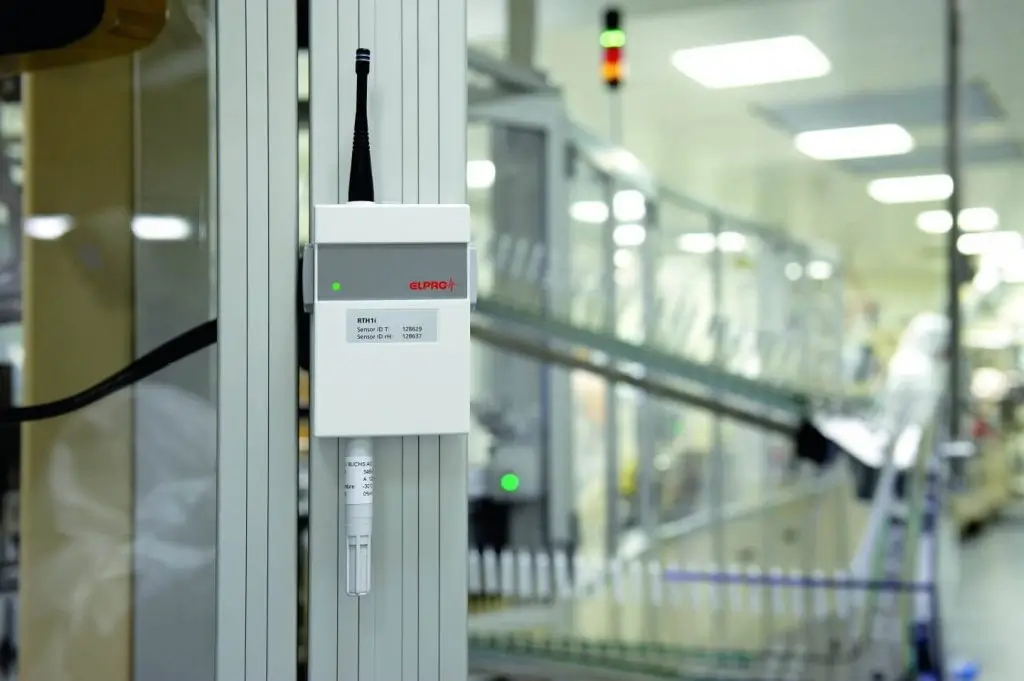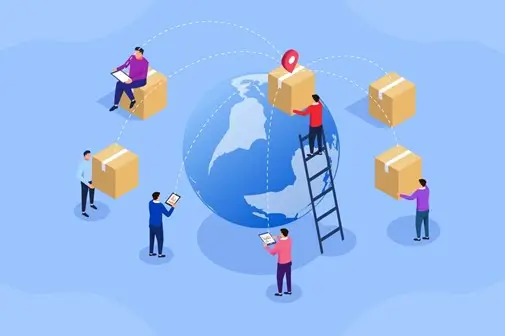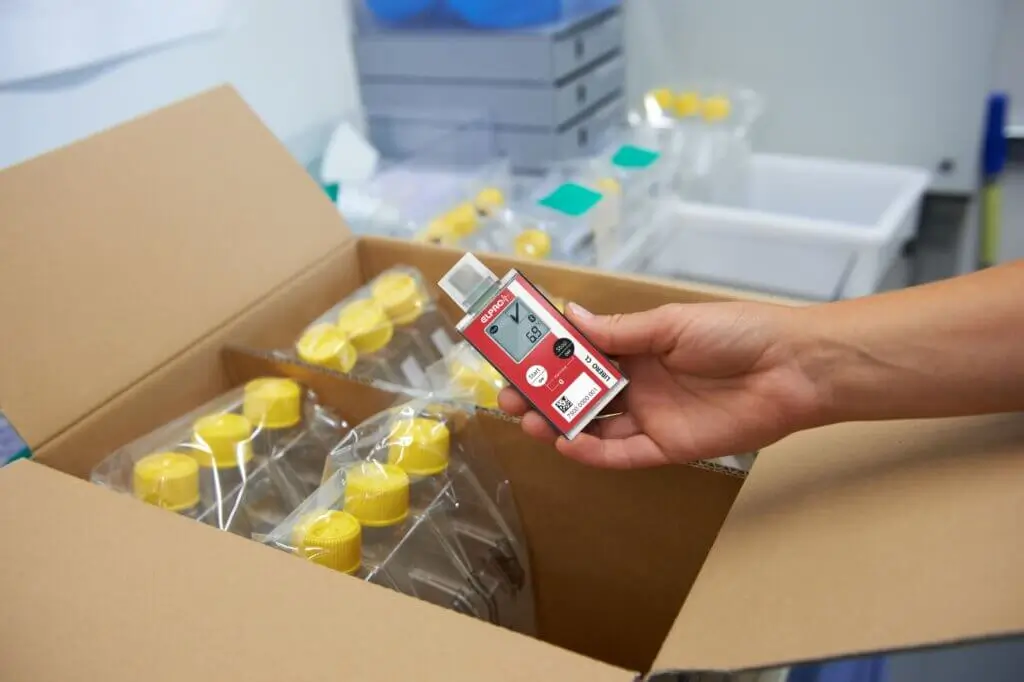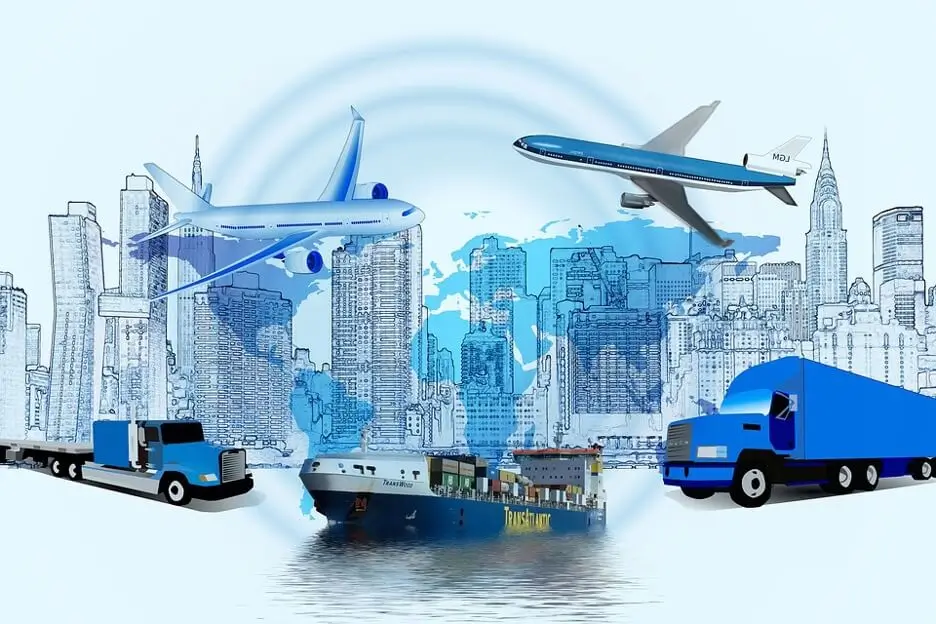
Article’s Summary
- Ensure meticulous planning for successful cold chain logistics.
- Leverage automation for real-time temperature monitoring.
- Comply with regulations for product safety assurance.
- Prioritize clear communication to prevent complications.
- Qualified staff handle temperature-sensitive goods adeptly.
- Leverage data loggers for enhanced efficiency and monitoring.
Cold chain logistics refers to the process of transporting temperature-sensitive products, such as pharmaceuticals, vaccines, and perishable foods, in a controlled environment. Cold chain logistics companies play a crucial role in ensuring that these products reach their destination in optimal condition. Maintaining the appropriate temperature range is essential to prevent spoilage, loss of potency, or contamination, which can have severe consequences. Cold chain logistics is a complex process that requires careful planning, monitoring, and execution to ensure that products are delivered in optimal condition. In this article, we will discuss the importance of cold chain logistics and 6 tips to help you manage your cold chain logistics better
The Importance of Cold Chain Logistics
Temperature-sensitive products require specialized handling and storage to maintain their integrity and safety. Failure to maintain the proper temperature range can result in spoilage, decreased potency, or even contamination, which can have serious consequences for both the product and the end-user. The importance of cold chain logistics is further underscored by the fact that many temperature-sensitive products are expensive and time-sensitive, making it essential to get them to their destination quickly and in optimal condition.
Improving Cold Chain Logistics
Managing cold chain logistics presents several challenges that are unique to this specialized subset of logistics. The following are 6 Tips to Help You Manage Your Cold Chain Logistics Better
6 Tips to Help You Manage Your Cold Chain Logistics Better
Tip 1: Proper Planning and Preparation

Proper planning and preparation are crucial for managing cold chain logistics effectively. In order to maintain the quality and safety of temperature-sensitive products throughout the transportation process, it is important to have a detailed plan in place. This plan should consider all aspects of the cold chain logistics process, from selecting the appropriate packaging materials to identifying potential risks and challenges.
One of the key components of proper planning is selecting the appropriate packaging materials. Depending on the product’s specific needs, different types of packaging materials may be necessary. Insulated boxes, refrigerated containers, and thermal blankets are just a few examples of the available options. The packaging materials used should provide effective insulation and prevent heat transfer. It is also important to use proper sealing techniques to prevent any heat or cold leaks.
Identifying potential risks and challenges is another important aspect of planning. There are a number of factors that can contribute to temperature excursions, including traffic delays, adverse weather conditions, and equipment failure.
Proper planning should also include consideration of all regulatory requirements. Different products and countries may have different requirements, and it is important to ensure that all necessary regulations are met. This may include obtaining permits or certifications, such as the IATA certification, which demonstrates compliance with air transport regulations for temperature-sensitive products.
Tip 2: Make use of Automation in Monitoring and Recording Temperature Data

Automation may help you eliminate human error, enhance inventory visibility, and optimize your supply chain. If you are currently manually tracking product temperatures, you will most likely find that you have incomplete data or that you are unable to derive relevant insights from your temperature data.
Sensors and data analytics may assist in guaranteeing that you have a comprehensive view of your product’s journey.
Using automation like ELPRO LIBERO data loggers offers real-time monitoring of temperature data, allowing for immediate feedback on temperature changes. This means that any temperature excursions can be detected immediately, and corrective action can be taken promptly. Real-time monitoring is especially important for products that are highly temperature-sensitive or have a narrow temperature range. For example, the United States Food and Drug Administration (FDA) requires that temperature-sensitive products be transported in a temperature-controlled environment and that records of the transportation and temperature monitoring be kept.
Automation will eliminate the need for manual data entry. This not only saves time and reduces the risk of errors but also allows for more frequent data collection. Automated data collection also ensures that all temperature data is recorded accurately and consistently, making it easier to identify any trends or patterns. You can customize alarms and notifications for immediate notification of any temperature excursions. This means that corrective action can be taken promptly, minimizing the risk of product spoilage or degradation.
Using automation you can access remote monitoring, which is crucial for large-scale cold chain logistics operations where multiple locations and products require simultaneous monitoring. With remote monitoring, temperature data can be accessed in real-time, ensuring immediate corrective action in case of temperature excursions. This feature also provides real-time visibility into temperature data, facilitating prompt corrective measures.
Tip 3: Compliance with Regulatory Requirements
In the United States, the Food and Drug Administration (FDA) has regulations in place to ensure the safety and efficacy of pharmaceutical products. These regulations include the requirement for maintaining proper temperature control during transportation and storage. Failure to comply with these regulations can result in serious consequences such as product spoilage, loss of revenue, legal penalties, and damage to brand reputation.
It is important for cold chain logistics companies to work closely with regulatory agencies and stay up-to-date with changes to regulations. This includes ensuring that all packaging materials, equipment, and transportation vehicles meet the required standards. Documentation should also be maintained and easily accessible in case of an audit or inspection.
In addition to regulatory compliance, it is also important to consider best practices for cold chain logistics in the pharmaceutical industry. This includes properly training employees on handling and transporting pharmaceutical products, implementing risk management strategies, and conducting regular audits to ensure that all aspects of the cold chain are functioning properly.
Tip 4: Effective Communication

Effective communication is an essential component of managing cold chain logistics successfully. Without clear communication between all parties involved in the transportation process, the risk of temperature excursions and product spoilage increases significantly. International cold chain logistics is a complex process that involves multiple parties, including shippers, carriers, and receivers. Therefore, establishing communication channels among all parties is critical for ensuring that everyone is aware of the product’s temperature requirements and that any issues or concerns are addressed promptly.
One of the critical aspects of effective communication in cold chain logistics is providing clear instructions on handling, storage, and transportation of temperature-sensitive products. Shippers should provide carriers with detailed instructions on the product’s temperature requirements, packaging materials used, and any special handling requirements. By providing carriers with this information, they can take the necessary precautions to ensure the products remain at the required temperature throughout the transportation process.
Additionally, carriers should provide shippers and receivers with regular updates on the shipment’s status, including temperature monitoring data, location, and estimated delivery time. This information can be used by shippers and receivers to plan for the arrival of the shipment and take any necessary measures to ensure that the products are received in optimal condition.
One way to establish effective communication is through the use of technology. Many companies use automated systems to track and monitor their cold chain logistics operations. These systems allow for real-time tracking of shipments, as well as automated alerts that can notify relevant parties of any issues that arise. This not only helps to prevent product loss or damage but also saves time and reduces costs.
Tip 5: Trained and Certified Personnel

One of the most- tips of managing a successful cold chain logistics operation is ensuring that personnel involved in the process are properly trained. This involves providing them with the knowledge and skills necessary to handle temperature-sensitive products safely and effectively. Without the proper training, personnel may inadvertently compromise the quality and safety of the products being transported, leading to costly losses and potentially harmful consequences.
Certification programs, such as the IATA certification, provide personnel with a formalized training program that covers the key aspects of cold chain logistics, including packaging requirements, temperature monitoring, and regulatory compliance. These programs offer an in-depth understanding of the best practices for handling and transporting temperature-sensitive products and can be an effective way to ensure that personnel have the necessary skills and knowledge to perform their job duties.
Training should be ongoing and include regular updates on new regulatory requirements and best practices for cold chain logistics. This is particularly important given that the regulatory environment for cold chain logistics is constantly evolving, with new rules and guidelines being introduced on a regular basis. By keeping personnel up-to-date on the latest requirements and best practices, companies can ensure that their cold chain logistics operation remains compliant and effective.
In addition to formal certification programs, companies can also implement in-house training programs that cover the specific requirements of their cold chain logistics operation. This can include training on the proper use of temperature monitoring devices, packaging requirements, and transport procedures. By providing regular training and ongoing education, companies can ensure that their personnel are equipped with the knowledge and skills necessary to manage the cold chain logistics process effectively.
It’s worth noting that training and certification are not only important for personnel directly involved in the cold chain logistics process, but also for those involved in supporting roles. For example, IT personnel responsible for maintaining the temperature monitoring systems must be properly trained on the equipment and software used to ensure accurate data collection and analysis.
Tip 6: Utilize Technology to Improve Efficiencies

Technology can help to improve efficiencies and reduce the risk of temperature excursions in cold chain logistics. For example, using real-time data feeds can provide logistics managers with accurate information on the temperature and location of products during transportation. Cloud-based solutions can integrate with existing systems, making it easy to implement new technology without replacing hardware or software.
ELPRO LIBERO data loggers are an excellent example of how technology can be utilized to improve efficiencies in cold chain logistics. The temperature and humidity at a specified place may be easily automated mapped and reported using these data loggers.
ELPRO LIBERO data loggers can be placed in key locations throughout the cold chain logistics process, such as warehouses, trucks, and storage facilities. They record the temperature and humidity at each location, providing real-time data that can be accessed remotely from any device with an internet connection. This allows logistics managers to monitor the entire process in real-time and respond quickly to any issues or concerns.
The ELPRO LIBERO data loggers are designed to be user-friendly, with an intuitive interface that allows for easy customization of temperature ranges, alarm thresholds, and reporting intervals. The data loggers also have a long battery life and can be programmed to provide alerts via email or SMS when the temperature exceeds pre-set thresholds.
In addition, ELPRO LIBERO data loggers generate comprehensive reports that can be used to demonstrate compliance with regulatory requirements and provide evidence of proper handling and storage of temperature-sensitive products. These reports can be generated automatically and sent to relevant parties, saving time and effort in the reporting process.
Additional Tips
Choose the right transportation

Choosing the right transportation is one of the most crucial factors in maintaining the integrity of the cold chain. The transportation method that is chosen must be appropriate for the product being transported and must have the necessary refrigeration and temperature monitoring capabilities. This is because different products have different temperature requirements, and failure to maintain the appropriate temperature throughout the entire transport process can result in spoilage or degradation of the product.
One of the most common transportation methods used for cold chain logistics is refrigerated trucks or trailers. These vehicles are designed to maintain a consistent temperature throughout the entire transport process and can be equipped with various temperature monitoring devices to ensure that the desired temperature range is maintained. Another transportation method that is often used is refrigerated shipping containers, which are used for international shipments of perishable goods.
It is important to note that not all refrigerated vehicles or containers are created equal. The size, age, and condition of the equipment can have a significant impact on the effectiveness of the cold chain logistics process. For example, older refrigerated vehicles may have outdated or malfunctioning refrigeration systems, which can result in temperature fluctuations that can damage the product being transported.
In addition to choosing the appropriate transportation method, it is also important to work with a reliable and experienced logistics provider. A reputable provider will have a thorough understanding of the cold chain logistics process and will have the necessary equipment, expertise, and protocols in place to ensure that the product is transported safely and efficiently.
Establish contingency plans
Establishing contingency plans is a critical aspect of managing cold chain logistics effectively. Despite careful planning and preparation, unexpected events such as power outages, equipment failures, or other disruptions can occur. In such cases, having a well-defined contingency plan in place can minimize the impact of the disruption on the cold chain process.
Contingency plans should be designed to address a range of potential scenarios that could disrupt the cold chain logistics process. For example, a power outage at a warehouse or distribution center could result in a loss of refrigeration, leading to a potential risk of spoilage or degradation of the product. Similarly, a breakdown of refrigeration equipment during transport could result in a temperature deviation that could also impact the quality of the product.
To develop an effective contingency plan, it is essential to identify the potential risks and disruptions that could occur and the appropriate response to each scenario. The plan should outline the steps that need to be taken in case of a disruption, including who is responsible for each task and how to communicate with all parties involved.
It is crucial to ensure that everyone involved in the cold chain logistics process understands the contingency plan and knows what to do in case of an emergency. This includes all employees, logistics providers, and any other stakeholders involved in the process. Regular training and drills can help to reinforce the contingency plan and ensure that everyone is prepared to respond in case of an emergency.
In conclusion, cold chain logistics is a critical aspect of many industries, especially pharmaceuticals. Proper management of cold chain logistics can ensure that products are transported at the required temperatures, preserving their quality and efficacy. Cold chain logistics companies play a crucial role in providing the necessary infrastructure and expertise to manage cold chain logistics effectively.
To better manage cold chain logistics, it is important to implement the tips discussed in this article, including proper planning and preparation, making use of automation in monitoring and recording temperature data, effective communication, compliance with regulatory requirements, trained and certified personnel and utilize technology to improve efficiencies.
Cold chain logistics pharmaceuticals is even more critical as the efficacy of drugs can be compromised if they are exposed to improper temperatures. Therefore, it is essential for cold chain logistics companies to have a thorough understanding of the specific requirements for transporting pharmaceuticals and to implement best practices to ensure that they are transported at the required temperatures.
Effective management of cold chain logistics is essential for the success of many industries, particularly pharmaceuticals. By following the tips outlined in this article and working with experienced cold chain logistics companies, businesses can ensure that their products are transported at the required temperatures and maintain their quality and efficacy.
Click here to find out more about Cold Chain Packing & Logistics today.